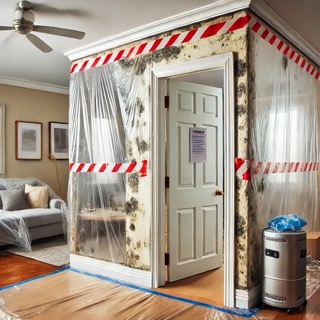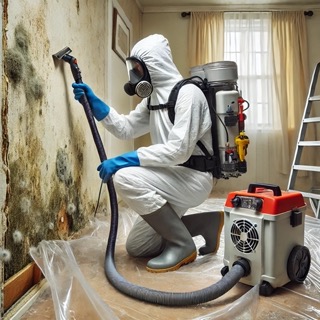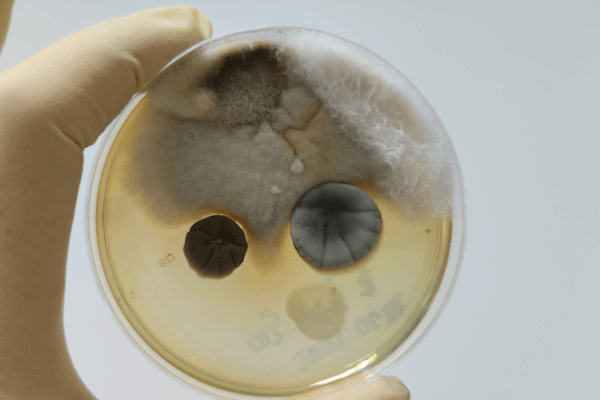Positive Mold Test: Now What?
A positive mold test can feel like a punch to the gut, but it’s important to remember that knowledge is power. Knowing your home has mold means you can take action to protect your health and your property. The key is knowing what to do next. In this guide, we’ll walk you through the immediate steps you should take if your mold test comes back positive, along with longer-term strategies to ensure your home stays mold-free.
Need expert guidance? Contact Howard Environmental for professional mold inspections and remediation services in Round Rock and Austin, Texas.
What Do Positive Mold Test Results Mean?
First things first: What exactly does a positive mold test indicate? In simple terms, a positive result means that mold spores have been detected at levels that could be harmful to your health or damaging to your home. Not all molds are created equal—some are relatively harmless, while others, like Stachybotrys (commonly known as black mold), can be more dangerous.
Your mold report will detail the types of mold found and their concentrations. This information is crucial in determining how serious the problem is and what steps to take next. Some molds are common and may only require minimal action, while others might necessitate immediate professional intervention.
Need help understanding your mold report? Check out our detailed guide on How to Read a Mold Report for more information.
Immediate Actions to Take if Your Mold Test is Positive

Isolate the Affected Area
The first step after receiving a positive mold test is to contain the problem. Mold spores are easily spread, so it’s important to isolate the affected area as much as possible. Close off the area to prevent spores from traveling to other parts of your home. If possible, avoid entering the contaminated space until professionals can assess the situation.
Here’s how to do it:
- Seal Off the Area: Use plastic sheeting or painter’s tape to seal off doors and vents leading to the affected area.
- Limit Airflow: Turn off any fans or HVAC systems that could circulate mold spores throughout your home.
- Keep Out: Limit access to the area, especially for vulnerable individuals like children, the elderly, or those with respiratory conditions.
Protect Your Health
Mold exposure can lead to a variety of health issues, from allergic reactions to more serious respiratory problems. To minimize your risk:
- Wear Protective Gear: If you need to enter the affected area, wear a mask, gloves, and eye protection to reduce exposure.
- Ventilate When Possible: If it’s safe to do so, open windows to help disperse any airborne spores.
- Monitor Symptoms: Keep an eye on any health symptoms, particularly respiratory issues, that might indicate mold exposure.
Assess the Extent of the Problem
Conduct a Visual Inspection
Now that you’ve isolated the area and taken steps to protect yourself, it’s time to assess how widespread the mold problem might be. Conduct a thorough visual inspection of your home, paying close attention to areas prone to moisture, such as bathrooms, kitchens, and basements. Look for:
- Visible Mold Growth: Discoloration on walls, ceilings, or floors can be a sign of mold.
- Water Damage: Mold often follows water damage, so check for stains, peeling paint, or warped materials.
- Musty Odors: A persistent musty smell can indicate hidden mold, even if you can’t see it.
Determine if Professional Remediation is Needed
Once you’ve assessed the situation, you’ll need to decide whether you can handle the mold removal yourself or if it’s time to call in the professionals. Here’s a quick guide:
- DIY Mold Removal: For small, localized mold problems (less than 10 square feet), you may be able to clean it up yourself using appropriate protective gear and cleaning solutions.
- Professional Remediation: If the mold covers a larger area, is located in difficult-to-reach places, or involves toxic molds like black mold, it’s best to hire a certified mold remediation company. Professionals have the tools and expertise to safely and effectively remove the mold and prevent it from returning.

DIY Mold Removal: When and How to Do It Safely
If the mold problem is small and manageable, here’s how to handle it on your own:
- Protect Yourself: Always wear protective gear, including gloves, a mask, and goggles.
- Use the Right Products: Clean moldy surfaces with a mixture of water and detergent or a commercial mold cleaner. For more detailed guidance, check out the EPA’s guide on mold cleanup. Avoid using bleach, as it can be ineffective on porous materials.
- Limitations of DIY: Remember, DIY methods are only suitable for small, non-toxic mold problems. If in doubt, consult a professional.
Preventing Future Mold Growth
Address the Root Cause
Mold doesn’t just appear out of nowhere—it’s usually a sign of an underlying moisture problem. To prevent mold from returning, it’s crucial to address the source of the moisture:
- Fix Leaks: Repair any leaks in your roof, windows, or plumbing as soon as possible.
- Improve Ventilation: Ensure that bathrooms, kitchens, and other moisture-prone areas are properly ventilated.
- Control Humidity: Use dehumidifiers to keep indoor humidity levels below 60%, especially during Austin’s humid summers.
Regular Maintenance Tips
Preventing mold is an ongoing process. Here are some tips to keep your home mold-free:
- Routine Inspections: Regularly check for signs of mold and moisture, especially after heavy rains or plumbing issues.
- Monitor Humidity: Keep an eye on indoor humidity levels, and take action if they rise above 60%.
- Ventilate: Make sure your home is well-ventilated, especially in moisture-prone areas like bathrooms and kitchens.
Follow-Up Testing
Why You Should Consider a Post-Remediation Mold Test
Even after remediation, it’s important to confirm that the mold problem has been fully resolved. A post-remediation mold test can:
- Verify Success: Ensure that all mold has been removed and that the remediation was successful.
- Peace of Mind: Give you confidence that your home is safe and mold-free.
When to Schedule Future Mold Inspections
Mold can return if conditions are right, so it’s wise to schedule regular mold inspections, especially in high-risk areas:
- High-Risk Areas: Basements, attics, and bathrooms are prime spots for mold growth.
- Seasonal Changes: Austin’s humid summers can increase the risk of mold, so consider testing during peak humidity seasons.
Frequently Asked Questions (FAQ)
What does a positive mold test mean?
A positive mold test indicates that mold spores are present at levels that could be harmful to your health or property. It requires prompt action to assess and address the situation.
What should I do if my home mold test comes back positive?
Immediately isolate the affected area, protect your health by wearing protective gear, and assess the extent of the problem. Consider professional remediation if the mold issue is extensive or involves toxic types.
What is a mold test?
A mold test detects the presence of mold spores in your home. It helps identify the type and concentration of mold, which is crucial for determining the appropriate course of action.
Conclusion
A positive mold test doesn’t have to spell disaster. By understanding your results and taking immediate action, you can protect your home and your health.
Don’t wait to address mold issues—schedule a professional mold inspection or remediation with Howard Environmental today.

